Children and adults with autism, as well as those with other developmental or neurological disorders, are often hyperactive, easily distracted and lack concentration. To help alleviate some of these symptoms, many may go through intense behavioral and/or occupational therapy, and are often put on a myriad of medications. However, some of these treatments prove unsuccessful, as they may overlook the potential catalyst: a dysfunctional sensory system.
When someone has a dysfunctional sensory system, sometimes one or more 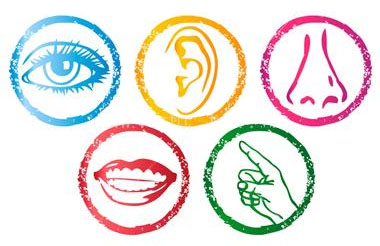 senses are either over- or under-reactive to stimulation. Such sensory problems may be the underlying reasons for such behaviors as rocking, hand-flapping, and spinning. Sensory integration techniques, such as pressure-touch, can facilitate attention and awareness, and reduce overall arousal.
senses are either over- or under-reactive to stimulation. Such sensory problems may be the underlying reasons for such behaviors as rocking, hand-flapping, and spinning. Sensory integration techniques, such as pressure-touch, can facilitate attention and awareness, and reduce overall arousal.
According to the Autism Research Institute, “Sensory integration is an innate neurobiological process and refers to the integration and interpretation of sensory stimulation from the environment by the brain. In contrast, sensory integrative dysfunction is a disorder in which sensory input is not integrated or organized appropriately in the brain and may produce varying degrees of problems in development, information processing, and behavior.”
A general theory of sensory integration developed by Dr. A. Jean Ayres primarily focuses on three basic senses: tactile, vestibular, and proprioceptive. While the audition and vision senses are highly familiar, the other three are essential to our basic survival. Basically, the tactile, vestibular, and proprioceptive senses allow us “to experience, interpret, and respond to different stimuli in our environment.”
Tactile System
The tactile system includes nerves under the skin’s surface that send information to the brain. This information includes temperature, light touch, pain, and pressure. “Dysfunction in the tactile system can be seen in withdrawing when being touched, refusing to eat certain ‘textured’ foods and/or wearing certain types of clothing, complaining about having one’s hair or face washed, avoiding getting one’s hands dirty, and using one’s finger tips rather than whole hands to manipulate objects.” Dysfunctions in the tactile system may lead to a misperception of touch and/or pain, and may lead to self-imposed isolation, general irritability, distractibility and hyperactivity.
Vestibular System
The vestibular system refers to structures within the inner ear that detect movement and changes in the position of the head. (This system tells you when your head is upright or tilted even with your eyes closed.) Dysfunction in the vestibular system may manifest itself in two different ways:
- Hypersensitive: Some children may be hypersensitive to vestibular stimulation and have fearful reactions to ordinary movement activities (e.g. swings, slides, ramps, inclines). They may also have trouble learning to climb or descend stairs or hills; and they may be apprehensive walking or crawling on uneven or unstable surfaces.
- Hypo-reactive: The child may actively seek very intense sensory experiences such as excessive body whirling, jumping, and/or spinning. In general, these children appear clumsy.
Proprioceptive System
The proprioceptive system refers to components of muscles, joints, and tendons that provide a person with a subconscious awareness of body position. When this system functions efficiently, an individual’s body position is automatically adjusted in different situations (i.e. allows us to sit properly in a chair or to step off of a curb swimmingly.) Dysfunction in the proprioceptive system includes “clumsiness, a tendency to fall, a lack of awareness of body position in space, odd body posturing, minimal crawling when young, difficulty manipulating small objects (buttons, snaps), eating in a sloppy manner, and resistance to new motor movement activities.
4 Weighted Wearables for Sensory Integration
As stated above, many therapies have been conducted to help individuals with sensory integration dysfunction. Individuals with autism, ADHD, sensory integration dysfunction and other developmental disabilities are often hyperactive and lack concentration. I wanted to seek out professional advice on products to help these individuals, so I contacted specialists at eSpecialNeeds to get their input.
Here are their 4 recommendations:
1. Sensory Hugs Deep Pressure Vests
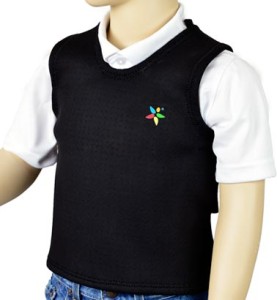 The Sensory Hugs Deep Pressure Sensory Vest is designed to calm children with ADHD, autism, and sensory integration dysfunction. It is a poncho-style vest is designed to be pulled snug to the wearer’s body, providing proprioceptive pressure sensory feedback, stability and skills. This vest is different from the weighted vests listed below, as it distributes the pressure evenly.
The Sensory Hugs Deep Pressure Sensory Vest is designed to calm children with ADHD, autism, and sensory integration dysfunction. It is a poncho-style vest is designed to be pulled snug to the wearer’s body, providing proprioceptive pressure sensory feedback, stability and skills. This vest is different from the weighted vests listed below, as it distributes the pressure evenly.
**DISCLAIMER** These vests should be used with direction or advice of a therapist, and should only be worn under adult supervision.
2. Sensory Hugs Washable Weighted Blankets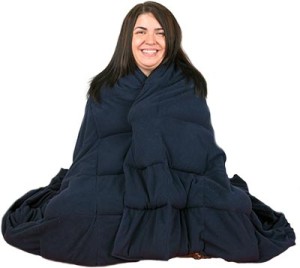
The Sensory Hugs Washable Weighted Blankets can be utilized during quiet rest time at school, home or clinic. Through the use of deep pressure, the blankets aide in “providing proprioceptive feedback and enhance sensory integration while relaxing the body and the central nervous system.”
3. Sensory Hugs Weighted Vests
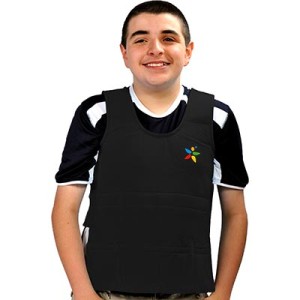 The Sensory Hugs Weighted Vest is designed to calm children with autism, ADHD, and sensory integration dysfunction. It is a poncho-style weighted vest that provides proprioceptive feedback, stability and skills. The dimensions and the weight of the vests can be altered to meet the needs of each individual.
The Sensory Hugs Weighted Vest is designed to calm children with autism, ADHD, and sensory integration dysfunction. It is a poncho-style weighted vest that provides proprioceptive feedback, stability and skills. The dimensions and the weight of the vests can be altered to meet the needs of each individual.
**DISCLAIMER** These vests should be used with direction or advice of a therapist, and should only be worn under adult supervision.
4. Sensory Hugs Weighted “V” Deep Pressure Vests
The Sensory Hugs Weighted “V” Deep Pressure Vests combine the benefits of compression and deep pressure to the chest and shoulders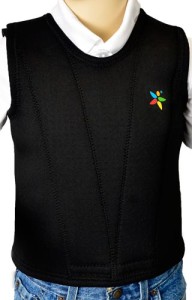 with the added features of weights that provide deep pressure to the shoulders, ligaments, tendons, and muscles. These are separate from other compression weighted vests which “insert the weights around the lower torso, the Sensory Hugs Weighted Deep Pressure vests incorporate channels in both the front and back of the vests providing weights across both the back and chest.”
with the added features of weights that provide deep pressure to the shoulders, ligaments, tendons, and muscles. These are separate from other compression weighted vests which “insert the weights around the lower torso, the Sensory Hugs Weighted Deep Pressure vests incorporate channels in both the front and back of the vests providing weights across both the back and chest.”
**DISCLAIMER** These vests should be used with direction or advice of a therapist, and should only be worn under adult supervision.

